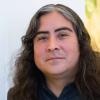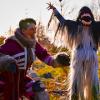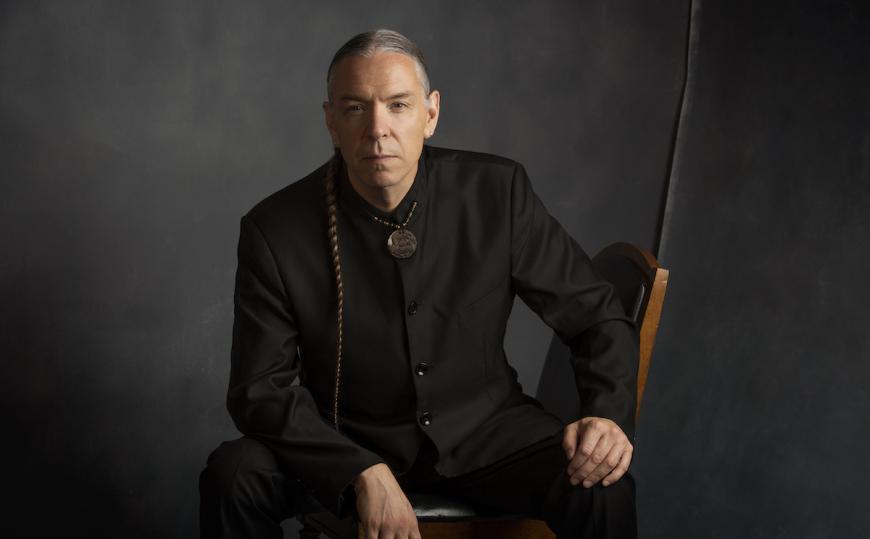
Unexpectedly, in a conversation with American Indian composer and pianist Jerod Impichchaachaaha' Tate, superlatives like “fabulous,” “stupendous,” and “sensational” are frequent. It’s language you might anticipate from haute couture fashion designers or theater critics overwhelmed by a successful production; hardly the words expected from a serious, acclaimed classical music composer. But if there’s one word that most defines the taproot from which he draws inspiration it is “ethos.”
Tate was raised in a music- and talk-filled home; and his father, who is Chickasaw American Indian is a classically trained pianist and vocalist who practiced law, specializing in Chickasaw politics. His mother, a dancer, choreographer, and professor at the University of Wyoming for more than 30 years, is of Irish descent. Tate holds a bachelor of music in piano performance from Northwestern University and a master of music in piano performance and composition from the Cleveland Institute of Music, where he studied with Elizabeth Pastor and Donald Erb.
Tate’s commissioned works have been performed by the National Symphony Orchestra, San Francisco Symphony and Chorus, Dallas Symphony Orchestra, Detroit Symphony Orchestra, Minnesota Orchestra, Oklahoma City Philharmonic, Colorado Ballet, Canterbury Voices, and Dale Warland Singers, among others. He has been commissioned three times by the American Composers Forum and his music was recently featured on the HBO series Westworld. Most often, his compositions merge classical music with his Chickasaw culture, but also extend to include the music and language of nearly a dozen other American Indian tribes. He is guest composer/conductor/pianist for the San Francisco Symphony Currents program in a virtual production, Thunder Song: American Indian Musical Cultures.
“Every culture has its own ethos,” he says. “That word, ‘ethos,’ it drives me and it’s what I look for in other people’s music.”
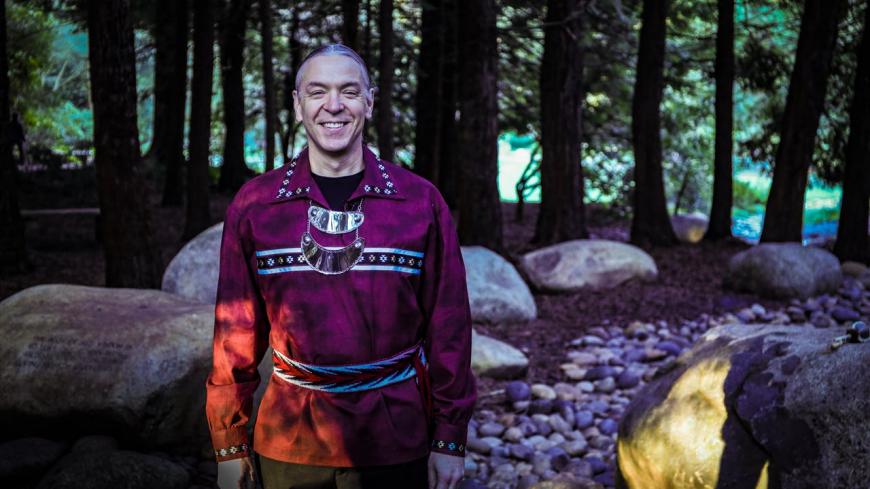
Because you often speak about Chickasaw music, I wonder if you are rarely asked your views on classical music; the aspects you most appreciate, the parallels to Chickasaw music you hear in it, or how working within and between the two traditions may have caused you to listen to them differently.
Honestly, I love this question because we’re nerding out, culturally, and I think that’s just great. Basically, my two cultural experiences are with American Indian music in general and within the classical world, it’s very dramatic, theater-based. The congruency is fabulous. I grew up in the dance world and was very involved because my mother was a choreographer. My heroes in fine arts were choreographers: Martha Graham, Ruth St. Denis, Isadora Duncan, Agnes de Mille, and also Nijinsky, [Marius] Petipa. In the history of dance stories of ballet are folk tales. Our stories in Indian country are also folk tales, and that element is my throughline between the two. There are traditional folk elements inside of both American Indian and classical music.
Will you speak about a few classical composers you most value because their ethnicity is, as is yours, integral to the work they created?
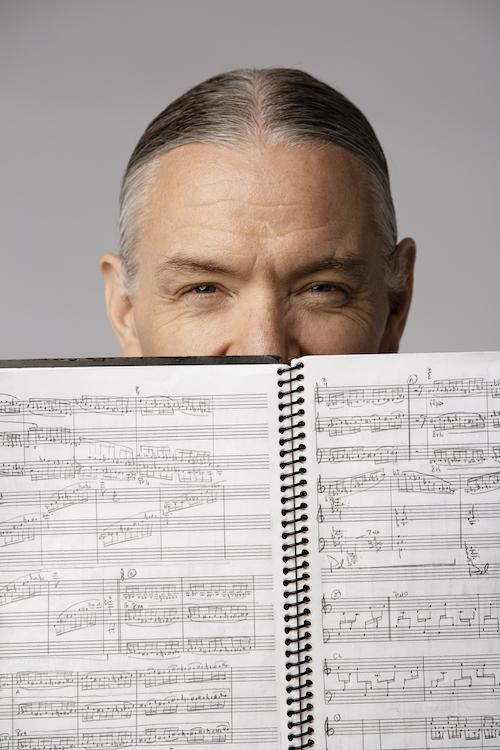
I would say most influential are Debussy, Prokofiev, and Bartók. American composers would be Sam Barber, Donald Erb, John Cage. When you’re speaking more historically, those first three were most impactful. Debussy was undeniably French: If you listen to French folk music, well, there it is. Compared to the other French art of the time, it’s just of that time. His style sounds authentic. Every culture has its own ethos. You can’t describe a Monet: you have to see it. Then you can compare it, after you’ve seen other things.
Bartók is the same. He has a certain sound, and when you hear traditional Hungarian music, the parallels are clear. For Prokofiev, he addressed different aspects of Russian culture very freely. Every composer has an ethos connected to identity. [Japanese composer] Tōru Takemitsu is so Japanese in his orchestrations. What does that mean? You have to hear Japanese music, see Japanese art. Then you say, “Oh yeah, that whole ethos is right there.” I’m grateful I was able to experience so much diversity through the artistry of my parents.
In high school I bought the LPs of the Bartók string quartets. I listened to those through an entire summer. I just sat with them and let them brew into my skin. I wasn’t even thinking about composing at that point. You know, there’s a current pop example, an album that resonate with me in terms of ethos. It was Peter Gabriel’s Passion, the soundtrack to [Martin Scorcese’s 1988 film] The Last Temptation of Christ. The guy was a Brit, but the British were steeped in Middle East and Indian culture, because of colonization. There’s a lot of cross-culturalization that goes on. He’s a product of that and the ethos he achieved was unbelievable to me. The album was so powerful.
Tell me about music and the role it played in your family’s home during childhood. Were different roles assigned to Chickasaw versus classical versus pop music?
No, it was all part of life. I was saturated with the presence of music, art, theater. My father is a classically trained pianist, but professionally, he was a lawyer involved in Indian law, history, and politics his whole life. He is author to our current Chickasaw constitution. My grandmother was involved in the tribe politically and genealogically. I have a deep, tangible consciousness of my tribal history — of how we politically and socially changed over the centuries. To this day, my dad and I, on the phone, blow back and forth between Chickasaw history and opera in the same breath. With my mom, we were constantly discussing her new productions. Talking about where we are sociologically, culturally, politically — I’m completely happy when I’m holding court on all of those topics. Talking was always all present, all of the time. My own son is already, like, “Ok, it’s my dad. We talk about this stuff all the time.” And he’s right: we talk about art, Chickasaw culture, music, feelings. We’re constantly thinking and talking.
Was there a trigger point or primary experience, idea, or person that caused you to turn from separating your musical heritages and discover purpose in integrating indigenous music in your classical music compositions? Or was that shift mostly about maturity and less due to a specific aha experience?
There is a specific event. As part of my mom’s repertoire — my mom choreographed traditional ballets and also created new ballets — she decided to make a new ballet based on American Indian stories from the northern Plains and the Rockies. She taught at the University of Wyoming and wanted something topical to the area. She turned to me and said, “You’re my Indian kid and a pianist, you can write my score.” That was it. My first commission was from my mother. I turned it down at first because it was overwhelming. Up until that point it had never even occurred to me to have a relationship between my Chickasaw identity and my classical training. My mom, in an innocent and beautiful way, asked me to be my entire self.
We premiered it and toured it and the response from both communities was strong and supportive. It was a beautiful avenue. When I went back to the Cleveland Institute to resume school after touring the ballet, I asked Donald Erb if he would take me as a composition student and add composition to my [piano performance] degree. I immediately announced to my family that I was to be a Chickasaw classical composer. It was the same as when I started piano. When I was 8, I asked for lessons. Within three months I announced to my parents I wanted to be a concert pianist. I’m intense that way. I’ll think about something for a while and once I take a position, I’m in.
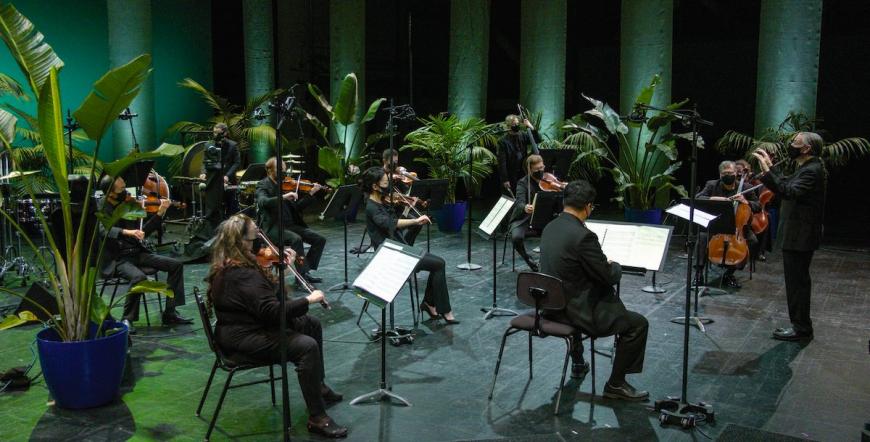
Tell me about Chickasaw music and the syncopations, rhythms, and textures that you find are most complex or fuse synergistically with classical music principles.
There’s no tension whatsoever. I’m Chickasaw and a classical musician, so it’s all me. It’s been done in spades before by other classical composers. Duke Ellington had zero problem with it, there was no conflict. Any modern artist is constantly remolding what’s happened traditionally. There’s no conflict: There is tremendous adventure and joy. I get excited because it’s a constant state of discovery and invention.
If you go back 2,000 years ago and our shell carvers were creating new notches on the shell, that was modern art of the time. An ancestor would get creative and go off in a new direction and the community would see it and talk about it. Some would say, “That’s not the old way of doing it. I don’t think I agree with it.” But others would love a new style and imitate it. That happened throughout world cultures ever since the planet existed, so I’m just another modern artist like my Chickasaw and European ancestors were years ago. I’m inventing and enjoying it.
But you are right, there are elements of Chickasaw folk music, like call-and-response, that absolutely resonate. And the meters shift rapidly, the phrasing isn’t classical. I’m known for having constant meter changes in my pieces. I’m expressing phrases of the folk music of my tribe. When I work with other American Indian music, I follow their phrasing as well. I merge what fits Hopi, Ojibwa, or whatever I’m working with.
The pentatonic scales of the Chickasaw melodies, the shifts between major and minor modes in one phrase, I tend to do. I also do what Bartók did and transcribe tunes and then create my chart of inversion, retrograde, rhythmic cell developments, augmented and diminished intervals. Then there’s Debussy, who says now, you can make it impressionistic, you can allude to it or be specific. You can stretch reality. Then you have [a compositional approach like] Prokofiev’s “I’m going to feel anything I want to feel, unapologetically.” I’m also inspired by Tchaikovsky’s storytelling, so when I find a legend in Indian country, a larger human archetype, I dive right in. I’m like a kid in a candy shop. My world just feels so colorful. I’m never in conflict.
Really? Never?
Oh, of course I’m in conflict with myself because I have Tchaikovsky looking over my shoulder. You’re darn right I’m going to be stressed. I want to supply repertoire like my heroes did. I have positive artistic pressure from every angle. That’s what makes us the best we can be.
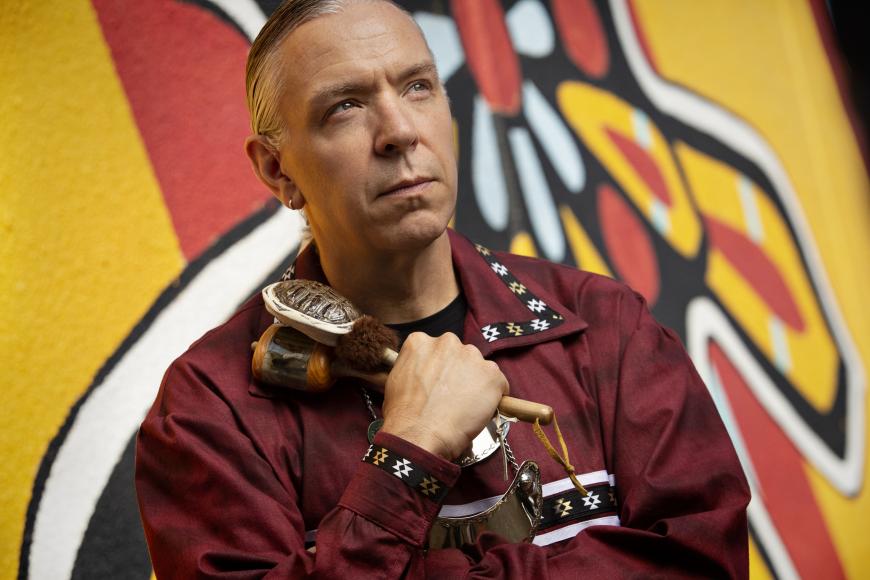
Does working with Chickasaw language and other indigenous languages open up unique possibilities for choral pieces or cause you to compose phrases or lines for an opera you might not have composed had you been writing a libretto in the English language?
Yes, absolutely. Sometimes a phrase I hear musically will be reshaped by language that it’s going to go with it. Or I’ll alter the language to go with whatever the music is. Chickasaw isn’t English, so it flows differently. The dramatic ideas [won’t change], but inner workings of how a phrase happens will be based on the language.
As Chickasaw language is an oral tradition currently at risk [the Chickasaw Language Revitalization program reports a mere 75–100 native speakers remain, all over the age of 55], is it difficult to notate a score?
That’s a very, very good question. My challenge as a composer is to make sure what’s on the page is clear. You have to use words to describe something if there’s no specific way to notate it. It’s helpful for people to hear the original folk music of the composer it comes from. At the same time, people play repertoire who aren’t familiar with the folk music of that composer, and they do beautifully. I do the best I can to notate, then I allow the human element to be what it is.
Sometimes people “get me,” sometimes not. Sometimes they get me better than I do, and that’s OK. You know Glenn Gould [in 1962, appearing with the New York Philharmonic] went out and played the Brahms D-minor piano concerto [No. 1] at half tempo for the first movement, which lasted about half an hour. Bernstein went out and said he absolved himself of this interpretation. I’m aware of that, so I don’t get too caught up. In this day of Zoom, I’ve had opportunity to talk with and coach people, much more than I have in the past. I’m taking advantage of that and people are tuned in and grateful. You can’t beat a one-on-one conversation. That’s where you get the maximum truth.
One thing that is misinterpreted often causes me to say, “Don’t sound Indian, because it can make us sound tom-tom-y.” Just read from the page as if reading a piece of classical repertoire. Do not over-interpret or overthink it. Just be who you are. I’m also half Irish. I love Irish folk music. One of my favorite bands is Anúna, run by Michael McGlynn. That suspended straight tone singing is to die for. I love minimal vibrato. With all the cultural revival in Gaelic music, it’s sensational.
You taught composition to a class of resident scientists in Oklahoma: What were the most interesting dynamics you’ve discovered?
I discovered we’re all young, with great possibility. We all have innocence we’re born with that never goes away. My oldest student was 75-years-old and he became youthful. They were learning all the time. It made me feel universal: Humans are born beautiful, brilliant, and well. When you allow them to be that, give them opportunity and access to be free in their expression, it’s just fabulous. That project was an unexpected education for me as well.
In your primary work as an educator teaching young musicians, you have said in interviews that you must explain your identity as an Indian, along with the basic principles of your compositional practices. How do identity and artistic expression interweave in your compositions and when you are teaching?
When I work with kids, I make it clear that this is who I am and what I do. They need to know who their teacher is. I also play other works and we analyze, so they start listening. I coach them through perking up their ears and make it clear there are no stylistic restrictions for the work they want to compose. My job is not to tell them what style or to influence them artistically. I want them to be impulsive. My job is to help them create the finest work, so that with the highest artistry they can be themselves.
Kids are plugged into the world: they know music from everywhere. They have tons of influences and their own desires to express things; I’m there to help them think of making it the highest piece of art they can. As a mentor, it’s important to believe in the kids before I even know what they’re doing. There are as many ways of being Indian as there are Indians. I show them my focus and passion — and then to look into themselves. It’s that simple. My son is seven years old and boy, does he have an identity. I try to keep my antennas up about who he is. How can I help him to be the best version of himself? I want kids to feel that confidence I have in them.
Are there examples in your work that demonstrate ways in which the students and their compositions have flowed into your work?
I don’t know if I’ve quoted a student, but they blow my mind. Many times, I think “that’s brilliant, wish I’d thought of that.” They impact me deeply. I don’t think I’ve ripped off any of their music, but I’ve been very inspired by their approach and things they’ve tried. It’s opened up a way for me to think about things when I’ve maxed out. I love their abandon with it and that’s affected everything I write.
Will you talk about the Currents project with SF Symphony: CURRENTS: Thunder Song explores the intersection of American Indian and classical musical cultures? Are there also classical and jazz intersections?
I was given curatorial latitude and they asked me to have two of my works on the program, for which I’m grateful. I wanted to make sure Louis Ballard was included because he is our grandparent of American Indian classical composition. His works were phenomenal and he and I are similar in our intent. He was a tremendous inspiration as I put myself together as a composer. Also, I wanted to feature one of my students so we could have something from a 16-year-old from a different tribe. (Rochelle Chester’s Moon’s Lullaby.)
Then, they wanted something with local tribes. Pomos are on the lower side of San Francisco. I found Thomas Leon Brown, a respected medicine man and traditional singer. He had just recorded an album of traditional Shakehead songs. I listened to the songs and thought, these are awesome. His songs were really rocking. I called and asked if could arrange a piano part for one of his songs and would he come down and lay down a recording. It was literally a week old when we recorded it. It was pure ancient and 100 percent modern in the exact same piece. For me, that was the absolute success of the program; two American Indians from different tribes coming together and merging to do a new piece (Hoy-Ya-A, a Shakehead Coming Out Song). It was a dream come true. That is exactly why I’ve spent decades doing what I’ve been doing.
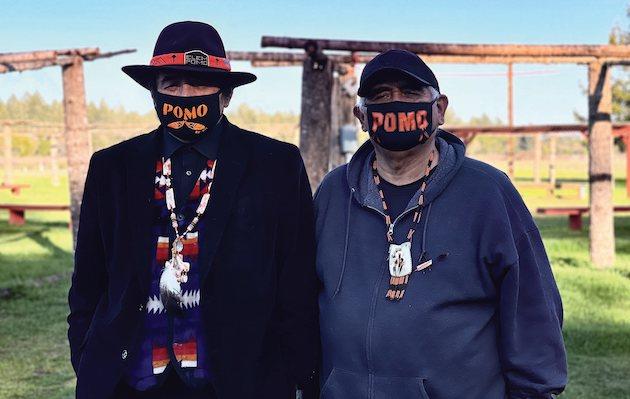
Lastly, will you share your thoughts about this time in history and the high-octane energy of recent interest in indigenous culture: What are the opportunities and are there also perils?
I don’t think it’s different than any other time in history. There’s ebb and flow all the time. There’s opportunity in every circumstance. Our pandemic and social circumstances now are an opportunity to do our best to find a silver lining. It’s a challenge to our souls. I can’t think of a decade that didn’t have challenges. It’s just a new flavor. I want to deliver well to this interest in American Indian music and culture.


